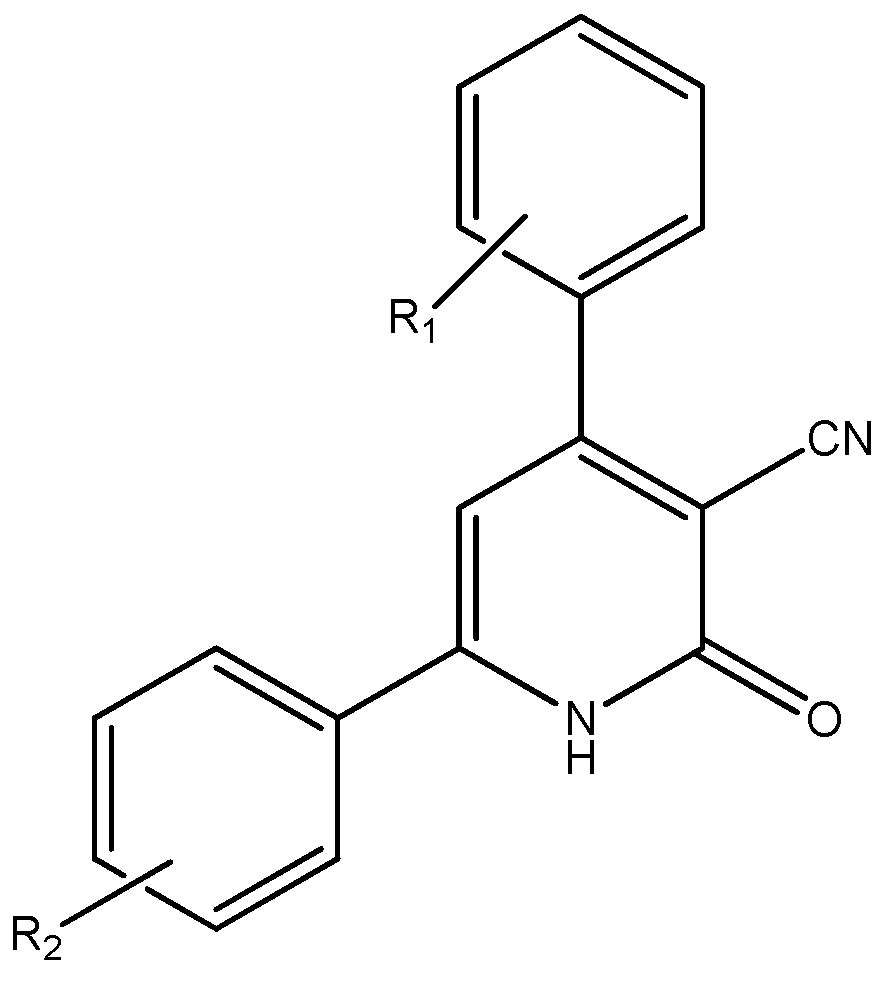Green and Eco-Friendly Multicomponent Synthesis of 2-Hydroxypyridines Under Free Solvent Conditions †
Abstract
:1. Introduction
2. Results and Discussion
3. Experimental Procedure
4. Conclusions
Author Contributions
Funding
Institutional Review Board Statement
Informed Consent Statement
Data Availability Statement
Acknowledgments
Conflicts of Interest
References
- Amer, M.M.K.; Aziz, M.A.; Shehab, W.S.; Abdellattif, M.H.; Mouneir, S.M. Recent advances in chemistry and pharmacological aspects of 2-pyridone scaffolds. J. Saudi Chem. Soc. 2021, 25, 101259. [Google Scholar] [CrossRef]
- Abdellatiif, M.H.; Ali, A.; Ali, A.; Hussien, M.A. Computational studies by molecular docking of some antiviral drugs with COVID-19 receptors are an approach to medication for COVID-19. Open Chem. 2021, 19, 245–264. [Google Scholar] [CrossRef]
- Wu, Y.C.; Jhong, Y.; Lin, H.J.; Swain, S.P.; Tsai, H.H.G.; Hou, D.R. Organocatalyzed Enantioselective Michael Addition of 2-Hydroxypyridines and α,β-Unsaturated 1,4-Dicarbonyl Compounds. Adv. Synth. Catal. 2019, 361, 4966–4982. [Google Scholar] [CrossRef]
- Desai, N.C.; Harsora, J.P.; Mehta, H.K. 2-Pyridone quinoline hybrids as potent antibacterial and antifungal agents. Indian J. Chem.—Sect. B Org. Med. Chem. 2021, 60 B, 261–266. [Google Scholar] [CrossRef]
- Li, L.N.; Wang, L.; Cheng, Y.N.; Cao, Z.Q.; Zhang, X.K.; Guo, X.L. Discovery and Characterization of 4-Hydroxy-2-pyridone Derivative Sambutoxin as a Potent and Promising Anticancer Drug Candidate: Activity and Molecular Mechanism. Mol. Pharm. 2018, 15, 4898–4911. [Google Scholar] [CrossRef] [PubMed]
- Biswas, A.; Maity, S.; Pan, S.; Samanta, R. Transition Metal-Catalysed Direct C−H Bond Functionalizations of 2-Pyridone Beyond C3-Selectivity. Chemistry 2020, 15, 2092–2109. [Google Scholar] [CrossRef] [PubMed]
- Litchfield, J.; Sharma, R.; Atkinson, K.; Filipski, K.J.; Wright, S.W.; Pfefferkorn, J.A.; Kalgutkar, A.S. Intrinsic electrophilicity of the 4-methylsulfonyl-2-pyridone scaffold in glucokinase activators: Role of glutathione-S-transferases and in vivo quantitation of a glutathione conjugate in rats. Bioorg. Med. Chem. Lett. 2010, 20, 6262–6267. [Google Scholar] [CrossRef] [PubMed]
- Fayed, E.A.; Al-Arab, E.M.E.; Saleh, A.S.; Bayoumi, A.H.; Ammar, Y.A. Design, synthesis, in silico studies, in vivo and in vitro assessment of pyridones and thiazolidinones as anti-inflammatory, antipyretic and ulcerogenic hits. J. Mol. Struct. 2022, 1260, 132839. [Google Scholar] [CrossRef]
- Shareef, S.; Saigal; Khizr, M.; Sahoo, S.C.; Khan, M.M. Microwave assisted novel one-pot three-component reaction for synthesis of 3-aminoimidazopyridines using molecular iodine. Tetrahedron Lett. 2021, 84, 153452. [Google Scholar] [CrossRef]
- Reen, G.K.; Kumar, A.; Sharma, P. Recent advances on the transition-metal-catalyzed synthesis of imidazopyridines: An updated coverage. Beilstein J. Org. Chem. 2019, 15, 1612–1704. [Google Scholar] [CrossRef] [PubMed]
- Zangade, S.; Patil, P. A Review on Solvent-free Methods in Organic Synthesis. Curr. Org. Chem. 2020, 23, 2295–2318. [Google Scholar] [CrossRef]
- Anizadeh, M.R.; Zolfigol, M.A.; Torabi, M.; Yarie, M.; Notash, B. Urea-dithiocarbamic acid functionalized magnetic nanoparticles modified with Ch-Cl: Catalytic application for the synthesis of novel hybrid pyridones via cooperative geminal-vinylogous anomeric-based oxidation. J. Mol. Liq. 2022, 364, 120016. [Google Scholar] [CrossRef]
- Kibou, Z.; Villemin, D.; Lohier, J.F.; Cheikh, N.; Bar, N.; Choukchou-Braham, N. Easy solventless synthesis of new mono and bis amino-5H-chromeno [3,4-c] pyridin-5-one derivatives. Tetrahedron 2016, 72, 1653–1661. [Google Scholar] [CrossRef]
- Belhadj, F.; Kibou, Z.; Benabdallah, M.; Aissaoui, M.; Rahmoun, M.N.; Villemin, D.; Choukchou-Braham, N. Synthesis and Biological Evaluation of New Chromenes and Chromeno[2,3-d] pyrimidines. S. Afr. J. Chem. 2021, 75, 150–155. [Google Scholar] [CrossRef]
- Baba-Ahmed, I.; Kibou, Z.; Daoud, I.; Belhadj, F.; Belarbi, L.; Daich, A.; Choukchou-Braham, N. Synthesis, Molecular Docking and ADME-TOX Studies of New Tacrine Analogs as Promising for Alzheimer’s Disease Therapy. Curr. Org. Chem. 2022, 26, 1218–1233. [Google Scholar] [CrossRef]
- Benzenine, D.; Kibou, Z.; Belhadj, F.; Baba-Ahmed, I.; Vázquez-Tato, M.P.; Seijas, J.A.; Choukchou-Braham, N. Efficient Multicomponent Catalyst-Free Synthesis of Substituted 2-Aminopyridines. In Proceedings of the 24th International Electronic Conference on Synthetic Organic Chemistry, 15 November–15 December 2020. [Google Scholar] [CrossRef]
- Kibou, Z.; Aissaoui, N.; Daoud, I.; Seijas, J.A.; Vázquez-Tato, M.P.; Klouche-Kheli, N.; Choukchou-Braham, N. Efficient Synthesis of 2-Aminopyridine Derivatives: Antibacterial Activity Assessment and Molecular Docking Studies. Molecules 2022, 27, 3439. [Google Scholar] [CrossRef] [PubMed]
- Nouali, F.; Kibou, Z.; Boukoussa, B.; Choukchou-Braham, N.; Bengueddach, A.; Villemin, D.; Hamacha, R. Efficient multicomponent synthesis of 2-aminopyridines catalysed by basic mesoporous materials. Res. Chem. Intermed. 2020, 46, 3179–3191. [Google Scholar] [CrossRef]
- Belhadj, F.; Kibou, Z.; Cheikh, N.; Choukchou-Braham, N.; Villemin, D. Convenient access to new 4-substituted aminopyrido[2,3-d]pyrimidine derivatives. Tetrahedron Lett. 2015, 56, 5999–6002. [Google Scholar] [CrossRef]



| Product | 1 | 2 | 3 |
|---|---|---|---|
| R1 | 4-F | 2-Cl | 4-F |
| R2 | 3,4-diMe | 4-OMe | 4-Me |
| Yield (%) | 60 | 46 | 62 |
Disclaimer/Publisher’s Note: The statements, opinions and data contained in all publications are solely those of the individual author(s) and contributor(s) and not of MDPI and/or the editor(s). MDPI and/or the editor(s) disclaim responsibility for any injury to people or property resulting from any ideas, methods, instructions or products referred to in the content. |
© 2023 by the authors. Licensee MDPI, Basel, Switzerland. This article is an open access article distributed under the terms and conditions of the Creative Commons Attribution (CC BY) license (https://creativecommons.org/licenses/by/4.0/).
Share and Cite
Benzenine, D.; Belhadj, F.; Kibou, Z.; Vázquez-Tato, M.P.; Seijas, J.A.; Choukchou-Braham, N. Green and Eco-Friendly Multicomponent Synthesis of 2-Hydroxypyridines Under Free Solvent Conditions. Chem. Proc. 2023, 14, 109. https://doi.org/10.3390/ecsoc-27-16297
Benzenine D, Belhadj F, Kibou Z, Vázquez-Tato MP, Seijas JA, Choukchou-Braham N. Green and Eco-Friendly Multicomponent Synthesis of 2-Hydroxypyridines Under Free Solvent Conditions. Chemistry Proceedings. 2023; 14(1):109. https://doi.org/10.3390/ecsoc-27-16297
Chicago/Turabian StyleBenzenine, Djamila, Fatima Belhadj, Zahira Kibou, M. Pilar Vázquez-Tato, Julio A. Seijas, and Noureddine Choukchou-Braham. 2023. "Green and Eco-Friendly Multicomponent Synthesis of 2-Hydroxypyridines Under Free Solvent Conditions" Chemistry Proceedings 14, no. 1: 109. https://doi.org/10.3390/ecsoc-27-16297
APA StyleBenzenine, D., Belhadj, F., Kibou, Z., Vázquez-Tato, M. P., Seijas, J. A., & Choukchou-Braham, N. (2023). Green and Eco-Friendly Multicomponent Synthesis of 2-Hydroxypyridines Under Free Solvent Conditions. Chemistry Proceedings, 14(1), 109. https://doi.org/10.3390/ecsoc-27-16297







